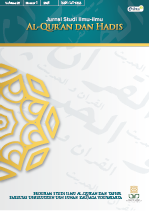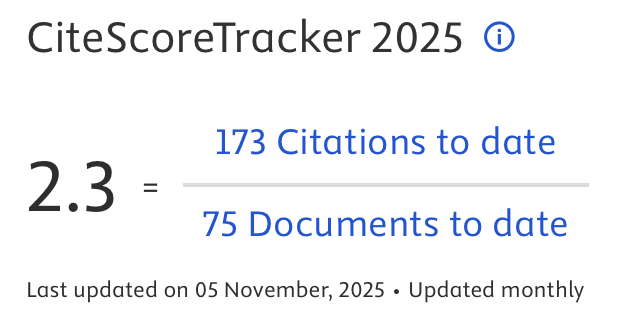ANALIZING ISNAD-CUM-MATN OF TAUḤID PHRASE ON PROPHET’S FLAG HADITH
DOI:
https://doi.org/10.14421/qh.2021.2201-04Keywords:
Prophet’s Flag, Tauḥīd Phrase, Hadith, Isnād-cum-Matn, Political Religion Symbolic.Abstract
The flag inscribed with the phrase tauḥīd has been claimed by Jihadist-extremism groups to use the narrative hadith as a representation of the flag of the Prophet Muhammad (Liwā' and Rāyah). This phenomenon inspires researchers to carry out in-depth investigations on the history of the hadith, either through micro analysis (isnād) or macro analysis (matn). The purpose of this investigation is to reveal the status and motive for the existence of the phrase tauḥīd on the Prophet's flag. This research uses a qualitative interpretive study to explore the historical-critical paradigm through isnād-cum-matn approach by Harald Motzki. The findings show that the phrase tauḥīd, which is claimed to be part of the symbol of the Prophet's flag, is only the form of insertion (idrāj) by Ḥayyan bin Ubaidillah as “the real common link”. The deviation was carried out as propaganda against the political contestation between the Abbasiyya dynasty and the Umayya dynasty in Egypt. This study’s results supply a new perspective that the religious symbols used as religious identity are not all based on valid sources.
Keywords: Prophet’s Flag, Tauḥīd Phrase, Hadith, Isnād-cum-Matn, Political Religion Symbolic
 Abstract viewed: 1136 times
|
Abstract viewed: 1136 times
|
 PDF downloaded = 695 times
PDF downloaded = 695 times
References
Abdul‐Jabbar, Ghassan. “The Classical Tradition.” In The Wiley Blackwell Concise Companion to the Hadith, edited by Daniel W. Brown, 13–38. Hoboken; NJ & Chichester: John Wiley & Sons Ltd, 2020. https://doi.org/https://doi.org/10.1002/9781118638477.ch1.
Amin, Kamaruddin. Menguji Kembali Keakuratan Metode Kritik Hadis. Cet. I. Jakarta: Hikmah, 2009.
Arroisi, Jarman, and Minhajul Afkar. “Islam on al-Attas and Wilfred C Smith Perspective (Analysis Study on the Meaning of Islamic Religion).” Kalimah: Jurnal Studi Agama dan Pemikiran Islam 18, no. 2 (2020): 295–310. https://doi.org/http://dx.doi.org/10.21111/klm.v18i2.4871.
Ayaz, Hacer. “The Differences in Historical Methodology between Juynboll and Motzki Related to Hadith.” Erzincan Üniversitesi Sosyal Bilimler Enstitüsü Dergisi (Erzsosder) 9, no. 1 (2015): 41–46. https://doi.org/https://hdl.handle.net/20.500.12432/910.
Baele, Stephane J., Katharine A. Boyd, and Travis G. Coan. “Lethal Images: Analyzing Extremist Visual Propaganda from ISIS and Beyond.” Journal of Global Security Studies 1, no. 1 (2019): 1–24. https://doi.org/https://doi.org/10.1093/jogss/ogz058.
Bahari, Mustazah, and Muhammad Haniff Hassan. “The Black Flag Myth: An Analysis from Hadith Studies.” Counter Terrorist Trends and Analyses 6, no. 8 (2014): 15–20. https://www.jstor.org/stable/26351277.
Al-Baihāqī, Aḥmad bin al-Ḥusayn. Sunan Al-Kubrā’ li Al-Baihāqī. Edited by Muhammad ‘Abd al-Qadir Aṭā’. Cet. III. Beirut: Dār al-‘Ilmīyya, 2003.
———. Sunan Ṣagīr li al-Baihāqī. Cet. I. Pakistan: Jāmi’āh al-Dirāsa al-Islāmīyya Karatci, 1989.
Balwi, Mohd Abd Wahab Fatoni bin Mohd, Ahmad Sufian bin Che Abdullah, and Asmuliadi Lubis. “The Application of Simons’ ‘Levers of Control’ in the Quran and Sunna.” Al-Bayan: Journal of Qur’an and Hadith Studies Vol. 16, no. 2 (2018): 139–62. https://doi.org/https://doi.org/10.1163/22321969-12340063.
Berg, Herbert. The Development of Exegesis in Early Islam: The Authenticity of Muslim Literature from the Formative Period. Richmond: Curzon Press, 2000.
Bukhari, S. A. G. “Investigation into Objections by the Orientalists on Hadith.” Peshawar Islamicus Vol. 7, no. 2 (2016): 77–100.
https://prdb.pk/article/investigation-into-objections-by-the-orientalists-on-hadith-2532.
Al-Dāruquṭnī, Abū Ḥāsan ‘Alī bin ‘Umar. Sunan al-Dāruquṭnī. Cet. I. Beirut: Mu’assasah al-Risāla, 2004.
Al-Dhahabī, Shamsuddīn Abū ‘Abdillāh. Al-Mauqiżah fī ‘Ilm al-Muṣṭalaḥ al-Ḥadīṡ. Ḥalb: Maktaba al-Maṭbū‘āt al-Islāmiyya, 1992.
Esch, Joanne. “Legitimizing the War on Terror”: Political Myth in Official‐level Rhetoric.” Political Psychology 31, no. 3 (2010): 357–91. https://doi.org/https://doi.org/10.1111/j.1467-9221.2010.00762.x.
Fattah, A. “Critiques and Appreciation on Orientalism in the Study of Islam.” Madania: Jurnal Kajian Keislaman Vol. 23, no. 1 (2019): 11–20. https://doi.org/http://dx.doi.org/10.29300/madania.v23i1.1744.
Habibi, D. “Simbol Agama Dan Organisasi Transnasional: Liwa’ Dan Rayah Dalam Bendera Hizbut Tahrir Indonesia.” Fikri: Jurnal Kajian Agama, Sosial Dan Budaya Vol. 4, no. 1 (2019): 57–68. https://doi.org/https://doi.org/10.25217/jf.v4i1.404.
Ḥasan, ‘Abd al-Mun’īm. Al-Jāmī’ fī al-Jarh wa al-Ta’dīl. Cet. I. Beirut: Dār ’Alīm al-Kutub, 1992.
Hitti, Philip K. History of The Arabs. Cet. 10. London: Macmillah Education Ltd., 1989.
Al-Ja‘fī, Muḥammad bin Ismā‘īl Abū ‘Abdillāh Al-Bukhārī. Ṣaḥīḥ al-Bukhārī: Al-Jāmi‘ al-Musnad al-Ṣahīh al-Mukhtaṣar Min Umūr Rasūlillāh Ṣallallāh ‘Alaih wa-Sallam wa Sunanih Wa-Ayyāmih. Edited by Muḥammad Zuhair bin Al-Naṣīr. Vol. IV. Beirut: Dār Ṭawq wa al-Najāḥ, 2002.
Al-Khateeb, Firas. Lost Islamic History: Reclaiming Muslim Civilisation from The Past. Pdf. London: Hurst Publisher, 2004.
Lambton, Ann KS. State and Government in Medieval Islam: An Introduction to the Study of Islamic Political Theory: The Jurists. Oxford: Oxford University Press, 1991.
Mabon, Simon. “Nationalist Jāhiliyyah and the Flag of the Two Crusaders, or: ISIS, Sovereignty, and the ‘Owl of Minerva.’” Studies in Conflict & Terrorism 40, no. 11 (2017): 966–85. https://doi.org/https://doi.org/10.1080/1057610X.2016.1258863.
Mājah, Abū ‘Abdullāh Muḥammad b. Yazīd Ibn. Sunan Ibn Mājah. Edited by Shu‘aib Al-Arnaūṭ, ‘A̅dil Murshid, Muḥammad Kāmil Qurh Balalī, and ‘Abdul Latīf Ḥirzullāh. Beirut: Dār al-Risāla al-‘Ilmiyya, 2009.
Matusitz, Jonathan. Symbolism in Terrorism: Motivation, Communication, and Behavior. New York & London: Rowman & Littlefield, 2014.
Matusitz, Jonathan, and James Olufowote. “Visual Motifs in Islamist Terrorism: Applying Conceptual Metaphor Theory.” Journal of Applied Security Research 11, no. 1 (2016): 18–32.
https://doi.org/https://doi.org/10.1080/19361610.2016.1104276.
Motzki, Harald. “Dating Muslim Traditions: A Survey.” Brill: Arabica 52, no. 2 (2005): 204–53.
———. “The Musannaf of Al-Razzāq Al-San’ānī a Source of Authentic Ahadit of the Fist Century.” In Hadith Origins and Developments, edited by Harald Motzki, Vol. 50:58. New York & London: Taylor & Francis Group: Journal of Near Easern Studies, 1991. https://doi.org/https://doi.org/10.4324/9781315253695.
———. The Origins of Islamic Jurisprudence: Meccan Fiqh before the Classical Schools. Vol. 41. Leiden: Brill, 2002.
Moubayed, Sami. Under the Black Flag: An Exclusive Insight into the Inner Workings of ISIS. London & New York: I.B.Tauris, 2015.
Munir, Samsul. Sejarah Peradaban Islam. Jakarta: Amzah, 2010.
Al-Muṣaylī, Abī Ya’lā Aḥmad bin ’Alī. Musnad Abī Ya’lā’ al-Muṣaylī. Edited by Ḥusayn Sālim Asad. Cet. I. Al-Dimashq: Dār al-Ma’mūn lī al-Turāth, 1984.
Al-Naysabūrī, Abū ‘Abdillāh al-Ḥākim. Al-Mustadrak ‘alā Ṣaḥīḥayn. Edited by Muṣṭāfa ‘Abd al-Qādir ‘Aṭā. Beirut: Dār al-Kutub al-‘Ilmiyya, 1990.
Al-Naysābūrī, al-Ḥakim. Ma’rifah ’Ulūm al-Ḥadith. Edited by Aḥmad bin Fāris al-Salum. Cairo: Dār Ibn Ḥazm, 2003.
Park, Crystal L., Donald Edmondson, and Amy Hale-Smith. “Why Religion? Meaning as Motivation.” In APA Handbook of Psychology, Religion, and Spirituality: Context, Theory, and Research, edited by Kenneth I. Pargament, Vol. 1., 157–171. Washington DC: American Psychological Association, 2013. https://doi.org/https://doi.org/10.1037/14045-008.
Pavlovitch, Pavel. “Dating.” In The Wiley Blackwell Concise Companion to the Hadith, 113–33. Hoboken;NJ & Chichester: John Wiley & Sons Ltd, 2020. https://doi.org/https://doi.org/10.1002/9781118638477.ch1.
———. “Juynboll, Al-Zuhrī, and Al-Kitāb: About the Historicity of Transmission below the Common Link Level." . Brill, 2020. .” Islam at 250, Brill 10, no. 1 (2020): 103–29. https://doi.org/https://doi.org/10.1163/9789004427952_007.
Ramdhani, Imam Sahal. “Teori the Spread of Isnad (Telaah Atas Pemikiran Michael Allan Cook).” Jurnal Studi Ilmu-Ilmu Al-Qur’an Dan Hadis 16, no. 2 (2015): 223–42. https://doi.org/https://doi.org/10.14421/qh.2015.1602-05.
Reed, E. D., R. Freathy, S. Cornwall, and A. Davis. “Narrative Theology in Religious Education.” British Journal of Religious Education 35, no. 3 (2013): 297–312.
https://doi.org/https://doi.org/10.1080/01416200.2013.785931.
Rijal, Syamsul. “Indoctrinating Muslim Youths: Seeking Certainty Through An-Nabhanism.” Al-Jami’ah: Journal of Islamic Studies 49, no. 2 (2011): 253–80. https://doi.org/https://doi.org/10.14421/ajis.2011.492.253-280.
Silinsky, Mark. Jihad and the West: Black Flag Over Babylon. Indiana: Indiana University Press, 2016.
Al-Ṭabrānī, Sulaiman bin Aḥmad bin Ayyūb. Mu’jam al-Awsāṭ li al-Ṭabrânī. Edited by Ṭārīq bin ’Abdillāh bin Muḥammad. Cairo: Dār al-Ḥaramayn, 1995.
Al-Turmudhi, Muhammad bin ’Isa. Sunan Al-Turmudhi. Edited by Ahmad Muhammad Syakir. Cet. II. Kairo: Maktabah Mushtafa Al-Bani Al-Halabi, 1975.
Warrick, Joby. Black Flags: The Rise of ISIS. Anchor, . New York: Anchor Book, 2015.
Wazir, R., A. H. Usman, M. J. Syopiyan, and M. N. Nasir. “Rationality and Logic Castigation from the Western Scholarly Perspective Towards Allegations of Anti-Hadith Groups.” Advanced Science Letters Vol. 23, no. 11 (2017): 10838–41. https://doi.org/https://doi.org/10.1166/asl.2017.10165.
Ysseldyk, Renate, Kimberly Matheson, and Hymie Anisman. “Religiosity as Identity: Toward an Understanding of Religion from A Social Identity Perspective.” Personality and Social Psychology Review 14, no. 1 (2010): 60–71. https://doi.org/https://doi.org/10.1177/1088868309349693.
Zuhri, L. S. “Orientalist Criticism of the Hadith (Tracing Theory ‘The Spread of Isnad’ Michael Allan Cook).” Journal Of Qur’an And Hadith Studies Vol. 6, no. 1 (2017): 53–72. https://doi.org/https://doi.org/10.1548/quhas.v6i1.13405.
Downloads
Published
How to Cite
Issue
Section
License
Publishing your paper with Jurnal Studi Ilmu-ilmu al-Qur'an dan Hadis means that the author or authors retain the copyright in the paper. Jurnal Studi Ilmu-ilmu al-Qur'an dan Hadis uses license CC-BY-NC-ND or an equivalent license as the optimal license for the publication, distribution, use, and reuse of scholarly works. This license permits anyone to copy and redistribute the material in any medium or format and must give appropriate credit, provide a link to the license, and indicate if changes were made. If you remix, translate, transform or build upon the material you may use it for private use only and not for distribution. Jurnal Studi Ilmu-ilmu al-Qur'an dan Hadis granted an exclusive non-commercial reuse license by the author(s), but the author(s) are able to put the paper onto a website, distribute it to colleagues, give it to students, use it in your thesis, etc, so long as the use is not directed at a commercial advantage or toward private monetary gain. The author(s) can reuse the figures and tables and other information contained in their paper published by Jurnal Studi Ilmu-ilmu al-Qur'an dan Hadis in future papers or work without having to ask anyone for permission, provided that the figures, tables, or other information that is included in the new paper or work properly references the published paper as the source of the figures, tables or other information, and the new paper or work is not direct at a private monetary gain or commercial advantage.
Jurnal Studi Ilmu-ilmu al-Qur'an dan Hadis journal Open Acces articles are distrubuted under the Creative Commons Attribution-NonCommercial-NoDerivatives 4.0 International (CC BY-NC-ND 4.0). Article can be read, copy and redistribute the material ini any medium or format under the following conditions:
Attribution — You must give appropriate credit, provide a link to the license, and indicate if changes were made. You may do so in any reasonable manner, but not in any way that suggests the licensor endorses you or your use.
NonCommercial — You may not use the material for commercial purposes.
NoDerivatives — If you remix, transform, or build upon the material, you may not distribute the modified material.










